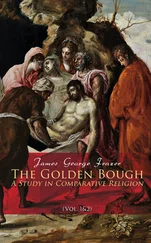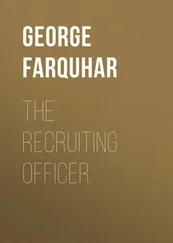George Fraser - The Steel Bonnets
Здесь есть возможность читать онлайн «George Fraser - The Steel Bonnets» — ознакомительный отрывок электронной книги совершенно бесплатно, а после прочтения отрывка купить полную версию. В некоторых случаях можно слушать аудио, скачать через торрент в формате fb2 и присутствует краткое содержание. Жанр: unrecognised, на английском языке. Описание произведения, (предисловие) а так же отзывы посетителей доступны на портале библиотеки ЛибКат.
- Название:The Steel Bonnets
- Автор:
- Жанр:
- Год:неизвестен
- ISBN:нет данных
- Рейтинг книги:4 / 5. Голосов: 1
-
Избранное:Добавить в избранное
- Отзывы:
-
Ваша оценка:
- 80
- 1
- 2
- 3
- 4
- 5
The Steel Bonnets: краткое содержание, описание и аннотация
Предлагаем к чтению аннотацию, описание, краткое содержание или предисловие (зависит от того, что написал сам автор книги «The Steel Bonnets»). Если вы не нашли необходимую информацию о книге — напишите в комментариях, мы постараемся отыскать её.
The Steel Bonnets — читать онлайн ознакомительный отрывок
Ниже представлен текст книги, разбитый по страницам. Система сохранения места последней прочитанной страницы, позволяет с удобством читать онлайн бесплатно книгу «The Steel Bonnets», без необходимости каждый раз заново искать на чём Вы остановились. Поставьте закладку, и сможете в любой момент перейти на страницу, на которой закончили чтение.
Интервал:
Закладка:
4.Basically the reiver’s equipment was not very different from that which the English Border light horseman was supposed to carry for government service, and which the Bishop of Durham defined as “a steele cap, a coate of plate, stockings and sleeves of plate, bootes and spurres, a Skottisch short sworde and a dagger, an horsemans staffe and a case of pistolls”.
XII
How the reivers rode
The reivers themselves, as has already been mentioned, might be anything from peers to farm hands; some were full-time professional raiders, others divided their time fairly evenly between agriculture and stealing, and some made only occasional forays, when times were hard or they were offered a particularly tempting quarry. They commonly rode in family parties—Liddesdale raids were almost invariably made up of permutations of Elliots, Armstrongs, Crosers, and Nixons, just as the Redesdale and Tynedale incursions consisted largely of Charltons, Dodds, Milburns, and Robsons.
Obviously raiders got to know each other, and there is strong evidence of professional loyalty, the same men riding in each other’s company again and again, whether or not they belonged to the same family. This professional tie often spanned the Border, and it was common for Englishmen to ride with Scottish bands, and vice versa. The outlaw operations, of course, were international; gangs like Sandy’s Bairns, with whom Kinmont Willie rode latterly, would welcome recruits from anywhere.
Unfortunately there were no Pepyses among the reivers, to leave a day-to-day journal of their activities. So we can only guess how many raids were casual affairs, and how many were carefully plotted weeks in advance. We cannot know for sure if some raider’s wife, aware that her larder was running short, ever did lay a dish of spurs before her husband as a hint to be busy. One can imagine an Armstrong, in his tower, finding time hanging heavy and whistling in his sons and cousins for a spur-of-the-moment foray to Redesdale or Gilsland; they would perhaps enlist a couple of Elliots on the way, or pick up a specialist in the shape of a rider who knew the target area particularly well. On the other hand, a leader like Buccleuch was, as we know, capable of the most meticulous planning and intelligence work before he mounted a foray.
Frequently raids began from what was called a “tryst”, a prearranged meeting-place where the last-minute details were settled. These were usually well-known landmarks, and when a raid had set off without its full muster, a sign would be left to indicate the direction taken. According to Scott, one method was to cut the leader’s name or signal in the turf, the arrangement of the letters indicating the path to be followed.
Everyone who writes about the reiver’s technique invariably quotes Bishop Leslie, in one of his various translations. This is Camden’s, quoted by Scott; it is worth remembering that it applies to both Scottish and English alike.
“They sally out of their own borders, in the night, in troops, through unfrequented by-ways, and many intricate windings. All the day time, they refresh themselves and their horses, in lurking holes they had pitched upon before, till they arrive in the dark at those places they have a design upon. As soon as they have seized upon the booty, they, in like manner, return home in the night, through blind ways, and fetching many a compass. The more skilful any captain is to pass through those wild deserts, crooked turnings, and deep precipices, in the thickest mists and darkness, his reputation is the greater, and he is looked upon as a man of an excellent head.
“And they are so very cunning, that they seldom have their booty taken from them … unless sometimes, when, by the help of blood-hounds following them exactly upon the tract, they may chance to fall into the hands of their adversaries. When being taken, they have so much persuasive eloquence, and so many smooth insinuating words at command, that if they do not move their judges, nay, and even their adversaries (notwithstanding the severity of their natures), to have mercy, yet they incite them to admiration and compassion.”
His lordship the bishop writes with such feeling and descriptive skill that one wonders if he wasn’t out with the Armstrongs himself on some occasion. He has the exact mood of the business, and everything he says is consistent with the voluminous records of raids left in Border documents. What he was describing was a long-distance foray, such as might be made by Liddesdale riders far into the English Middle March, with only a small number of men involved and the need for passing undetected of the first importance.
Raids varied in size. Bands of a dozen to fifty riders were normal, but there were one-man operations, and great forays in which upwards of two or three thousand reivers took part. The objectives also varied, from a single animal—as in the case of the black horse which helped to rekindle the Maxwell-Johnstone feud—to an entire town, or even several towns. Distance was no object for rustlers who were expert at covering their traces, or who ventured out in sufficient numbers to be able to defy pursuit. Border raids are recorded within three miles of Edinburgh, and as far south as Yorkshire. What is striking is that the thieves far more often than not got away with it, which suggests that Leslie’s skilful captains and men of excellent heads were by no means uncommon.
Night-time was the popular hour for riding, although day forays of all sizes were frequent. There is some evidence that the reivers liked moonlight—“There’ll be moonlight again” is a slogan long associated with the Scott family—but even more to suggest that they preferred complete darkness. The expert guides seem to have known their ground to an inch, and the kind of leader typified by Hobbie Noble, the legendary English fugitive, could pick his way through the wastes at night with ease.
The size of the foray naturally dictated the technique employed. While small bands depended heavily on stealth and secrecy, the great raids went much more openly; they had less to fear from a hot trod or the country’s rising against them, since they were strong enough to fight off anything short of an army. Consequently, their leaders planned these forays like miniature military campaigns, often spending several days in enemy territory, or even longer, depending on the danger of the general situation.
A master of the large-scale foray technique was that old Walter Scott of Buccleuch who flourished in the first part of the sixteenth century, was an inveterate English-hater, spent several terms in confinement in Scotland for political and other reasons, and was eventually cut down by the Kerrs in the great Kerr – Scott feud. When he swept into the English Middle March in the winter of 1532 it was with 3000 lances, most of whom he held in reserve while smaller forays were detached at chosen targets. The main body thus served the double purpose of base camp, established on an English village, and ambush for any English trods which might pursue Buccleuch’s smaller raiding bands.
The ambush was a common variation of the large and medium-sized raids, the reivers leaving a strong party posted on their proposed return route, so that pursuers chasing a raid frequently found themselves surrounded and beset by an unexpectedly large enemy force. This was a favourite stratagem of the Armstrongs, who practised it memorably against Lord Dacre in 1528 (see pp. 233–4).
The raiding season, although it was never closed in practice, was autumn to spring, when the cattle and their owners were in their permanent winter quarters in the valleys. As the summer waned, anxiety grew along the frontier; “the longer the nights growe, the worse they will be”, wrote Robert Carey one late August, and young Scrope in November was lamenting: “The depe of winter and most unquiet season is come upon us.” Carey made a study of this aspect of reiving, and pronounced the last months of the year as the worst, “for then are the nights longest, theyre horses at hard meat, and will ride best, cattel strong, and will drive farthest.”
Читать дальшеИнтервал:
Закладка:
Похожие книги на «The Steel Bonnets»
Представляем Вашему вниманию похожие книги на «The Steel Bonnets» списком для выбора. Мы отобрали схожую по названию и смыслу литературу в надежде предоставить читателям больше вариантов отыскать новые, интересные, ещё непрочитанные произведения.
Обсуждение, отзывы о книге «The Steel Bonnets» и просто собственные мнения читателей. Оставьте ваши комментарии, напишите, что Вы думаете о произведении, его смысле или главных героях. Укажите что конкретно понравилось, а что нет, и почему Вы так считаете.












